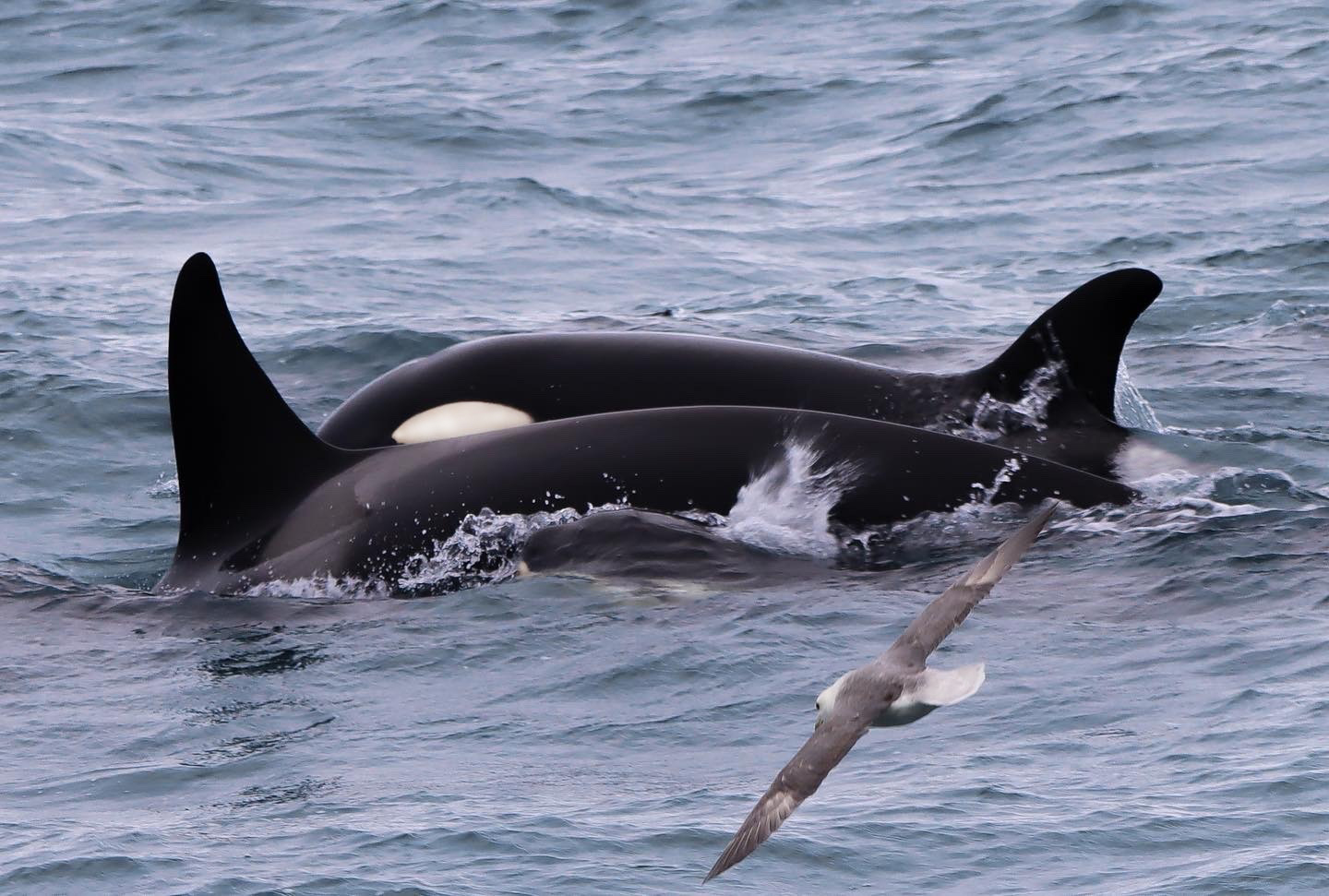The press release published on July 6 under the authority of the Seine-Maritime Prefect has at least 2 surprises in store:
– The orca first spotted and photographed in the Seine Bay on April 5th by the crew of the fishing boat Atlas later died on May 30th opposite Caudebec-en-Caux in a loop of the Seine. She was not a male as claimed by experts.
– Ammunition was discovered on June 3rd by the osteology specialist of the Museum of Natural History in Paris, in some shreds of flesh at the base of the female orca’s skull. This major discovery, subsequent to the post-mortem examination which in situ on the banks of the Seine had brought together some fifteen specialists under a tent, was kept secret for more than a month. The caliber of the bullet has not been communicated. It cannot be excluded that the carcass of the female orca contained other ammunition. Apart from a few samples to measure chemical contaminants, the carcass was quickly sent to a knacker. It was transformed into animal meal. Only the skeleton remains of the orca.
Off the coast of Texas, Mississippi, Florida and the Gulf of Mexico, more and more dolphins are being shot and killed, 17 between 2002 and 2014. The rate has been accelerating for the past 4 years. The NOAA (National Oceanic and Atmospheric Administration) is now offering a reward of 20,000 US$ to whoever can find the person or persons responsible for these acts of cruelty against animals protected by the Marine Mammal Protection Act and by international conventions. The killing is spreading in California and in the Caribbean.
It appears therefore necessary to immediately pass the corpses of dolphins and whales stranded on the coast and in estuaries through a metal detector when the cause of death is not immediately identified. In Africa, this operation is performed as soon as possible on the bodies of poached rhinos. It helps to clarify the circumstances of the death and to extract from the flesh or the organs evidence useful for the investigations.
In France, the Rural and Maritime Fishing Code punishes with a 22,500 € fine “the fact of having on board or using for fishing firearms, soporific or toxic substances likely to destroy animals, plants and their environment”. Regarding firearms, it is not certain that this ban is in force in the other countries of the European Union bordering the North-East Atlantic, in the Faroe Islands, Norway and Russia.
It was only in February 2021 that Scotland banned salmon farm operators from shooting on sight seals attracted by the concentration of a favorite prey and the opportunity to seize the escapees or somehow the captives. It is likely that the aquaculture industry used the same deterrence techniques for orcas as they did for seals. Orcas feed on fish (and seals).
In the North Sea, orcas closely follow the movements of the purse seiners and giant trawlers targeting mackerel and no information is available on how to scare away hungry orcas. The orca that was lost and alone in the Seine Bay probably came from the North Sea.
The CNRS study published in the Journal of Cetacean Research and Management in 2010 reports that to get rid of orcas that prey on toothfish caught on longline hooks, crews of pirate boats attack them with explosives in the southern Indian Ocean in sub-Antarctic waters.
Guns and dynamite are far from being the only enemies of orcas. They have unbeatable and constantly reinforced legions against them. Chlorinated, brominated and perfluorinated agents invented by chemistry to ensure the well-being, safety and prosperity of mankind on land rub off into the sea and concentrate in the milk, liver and muscles of orcas. At the top of the marine food chain, orcas are the primary beneficiaries of humanity’s toxic legacy. The livers of 4 orcas stranded in Ireland between 2010 and 2017 contained 17 mg/kg of persistent, disruptive chemical residues and the fetus of one of the females was already contaminated.
Orcas live and hunt in packs like wolves. The social structure is stable. Each group is dominated by females and can include 4 generations if the foremothers reach their maximum life expectancy (90 to 100 years), an achievement that is increasingly unlikely given the amount of external and internal aggression they are subjected to along with all their fellow creatures. In the world’s oceans, orcas are estimated to number no more than 50,000.
Even after death, stranded orcas are not at peace. Scavengers prowl the beaches and take their teeth and even their jaws. They are found some time later on sale on the Internet or in curiosity shops.
Robin des Bois has been an observer at the International Whaling Commission since 1986. The next plenary meeting should take place in Slovenia in October 2022. “On the Trail” #33, the quarterly published by Robin des Bois on poaching and smuggling of endangered animals, includes 8 pages dedicated to marine and freshwater mammals and will be published on Wednesday, July 13.
 Imprimer cet article
Imprimer cet article










